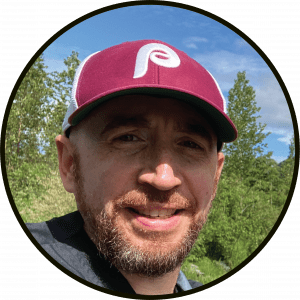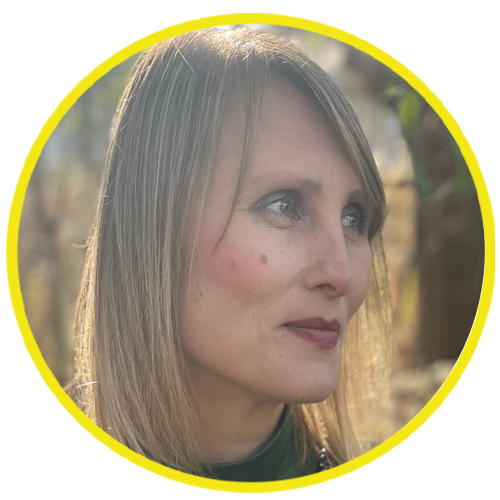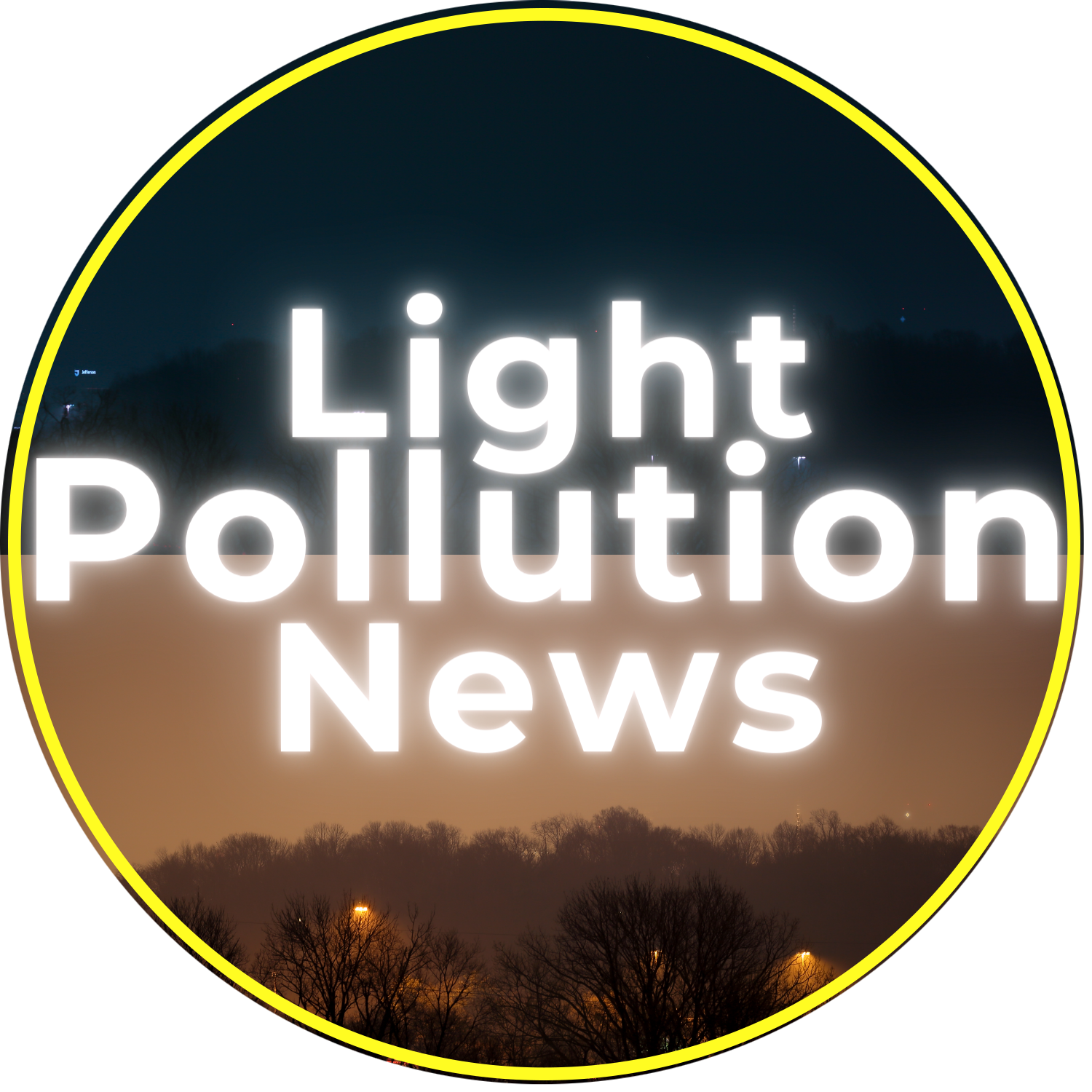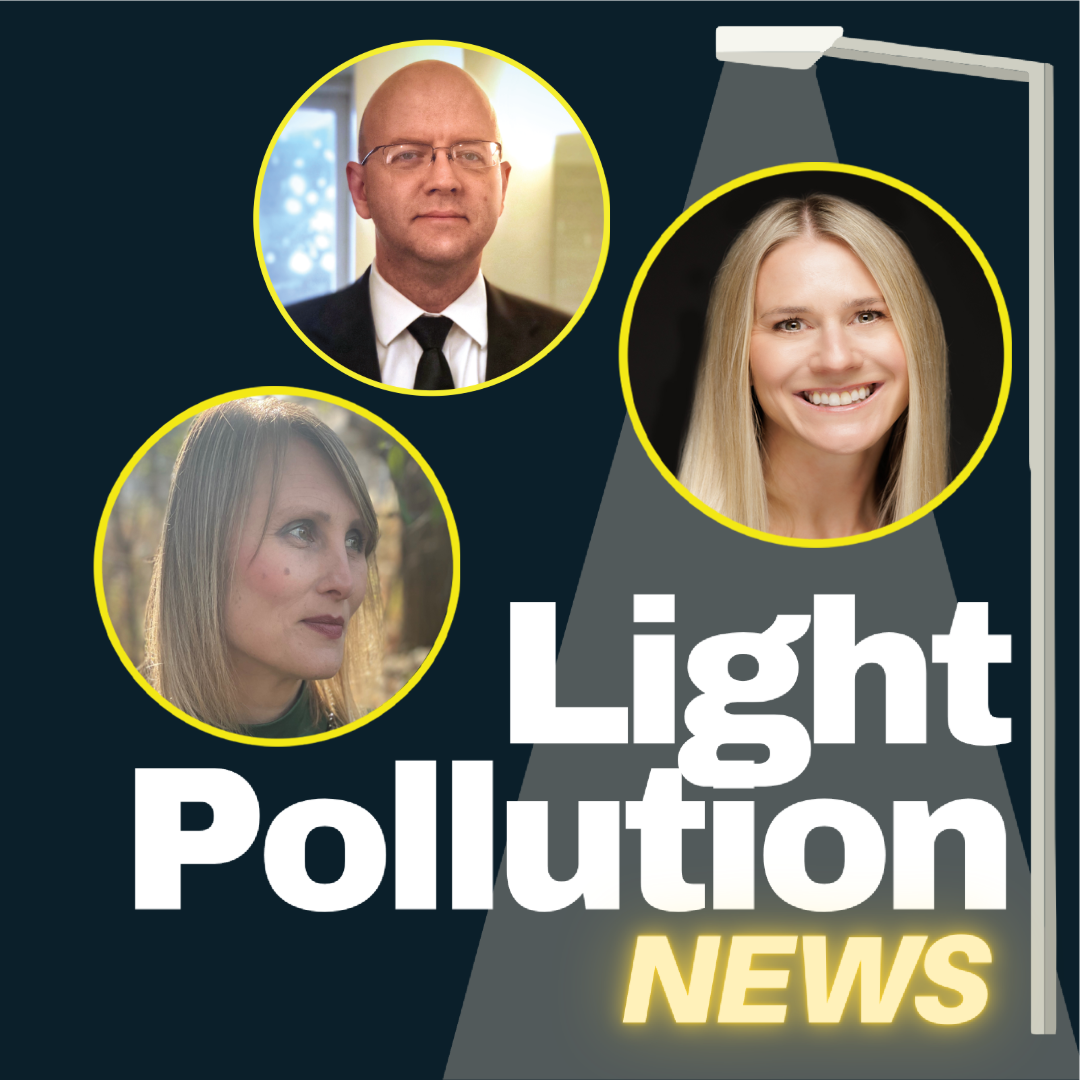
November 2025: Tunable or Standard?, Light Pollution News
Join our mailing list. Follow us at LinkedIn, Instagram, Facebook, & Tiktok.
This Episode:
Oh, this is a good one! Joining me today are Tatsiana Thomson from Brome, journalist and author Lynne Peeples, and one of my favorite returning guests, John Barentine.
This episode, we look at realistic drone shows, how one tribe in Arizona views the night sky, and we ask, does an increase in GDP necessarily mean a corresponding increase in light pollution?
Settle in and enjoy this episode of Light Pollution News!
Like What You See and Hear? Consider Supporting the Show.
A hearty thank you to all of our paid supporters out there. You make this show possible.
For only the cost of one coffee each month, you can help us continue to grow. That’s $3 a month. If you like what we’re doing, if you think this adds value in any way, why not say thank you by becoming a supporter!
Why Support Light Pollution News?
- Receive quarterly invites to join as a live audience member for recordings with special Q&A sessions post recording with guests.
- Receive all of the news for that month via a special Supporter monthly mailer.
- The satisfaction that your support helps further critical discourse on this topic.
Support Light Pollution News!
Host:

Guests:



Tatsiana Thomson
Tatsiana Thomson is the Sales and Marketing Manager at Brome, the Canadian company behind the well-loved Squirrel Buster feeders. What began as a personal hobby quickly turned into a passion for sharing the joy of backyard birding with others. With a background in education, Tatsiana loves inspiring both bird lovers and retailers to learn, explore, and create welcoming spaces for birds. She brings a mix of storytelling, practical tips, and genuine enthusiasm to everything she does.
John Barentine
John Barentine is an astronomer, historian, author, science communicator, and dark-sky consultant. He earned a Ph.D. in astronomy from the University of Texas and is a member of the American Astronomical Society, the International Astronomical Union, and the Royal Astronomical Society. His interests include history, politics, and law.
Lynne Peeples
Lynne Peeples is a science journalist, speaker, and author of THE INNER CLOCK: Living in Sync with Our Circadian Rhythms (9/24/2024 Riverhead Books/Penguin Random House). Her writing has also appeared in The Guardian, The Los Angeles Times, Scientific American, Nature, The Atlantic, and other publications. Peeples herself has appeared on national and international television and radio, including MSNBC, NPR’s Fresh Air, and BBC News. Before becoming a journalist, she crunched numbers as a biostatistician for HIV clinical trials and environmental health studies. She holds master’s degrees in biostatistics from the Harvard School of Public Health and in science journalism from New York University.
Full Article List:
- Spectacular drone show over Vatican recreates Michelangelo’s ‘Creation of Adam,’ Virgin Mary, Ariel Zilber, New York Post.
- As more cities get Dark Sky label, these Indigenous communities apply the same tenets, Mark Brodie, KJZZ-FM.
- The First Dark Sky Map of Thailand: International Comparisons and Factors Affecting the Rate of Change, PrePrints.org.
- Glynn slow to shut off brighter turtle-confusing lights near Buc-ee’s, Mary Landers, The Current.
- Who Controls the Light Poles? Utilities or the FCC?, Inside Lighting.
- Our night skies are worth fighting for: petition for national action, Mandy Ellis, Western Plains App.
- Leicestershire: Street light dimming plan put forward by council, Hannah Richardson & Greig Watson, BBC News.
- SMITH, LEO F v. MULLINS, RAHEEM L Et Al, State of Connecticut Superior Court.
- Why Sleep Tourism Is The Trend We’ve Been Dreaming About, Angelina Villa-Clarke, Forbes.
- Lapalala Wilderness Nature Reserve becomes the first Dark Sky Park in South Africa, Natasha Chortos, Dark Sky International.
- Cataloochee Ranch and The Swag expand DarkSky Approved Lodging to East Coast, Natasha Chortos, Dark Sky International.
- The truth about Dark Sky, Bob Yoesle Goldendale, The Goldendale Sentinel.
- Woomera and Andamooka observatories team up for outback stargazing trail, Viki Ntafillis, ABC News.
Light Pollution News: November Highlights
Vatican Drone Show
During the ‘Grace for the World’ concert at the Vatican, attendees witnessed a spectacular drone show featuring religious imagery, including the word “JOY” above St. Peter’s Basilica and a realistic depiction of Pope Francis. The event featured performances by Pharrell Williams, John Legend, Jelly Roll, and Andrea Bocelli.
Indigenous Communities Lead Dark Sky Protection
Tribal communities in Northern Arizona are advancing dark sky protection efforts, applying principles that align with indigenous cultural heritage and night sky preservation. This reflects growing recognition of the cultural significance of dark skies for indigenous peoples.
Thailand Losing Dark Skies Fastest Among Study Countries
A preprint study analyzing Thailand, the UK, Chile, and Botswana over 11 years found that public policy—not GDP or population size—is the most critical factor in protecting dark skies. Analysis shows:
- Thailand: Lost 0.67% of dark skies per 1% GDP growth (30% GDP increase, 2012-2023)
- UK: Improved by 0.087% per 1% GDP growth (15% GDP increase)
- Chile: Lost 0.17% per 1% GDP growth (25% GDP increase)
- Botswana: Lost 0.03% per 1% GDP growth (23% GDP increase)
The findings suggest effective policies can control light pollution while enabling economic growth.
Georgia Sea Turtle Lighting Dispute
Glynn County, Georgia, faced controversy over high-mast lighting near a new Buc-ee’s gas station at Exit 42. The Georgia Department of Transportation requested lights be shut down July through October to protect loggerhead sea turtle nesting sites 12 miles away on Little St. Simons Island. The county refused, demanding proof of harm despite receiving environmental impact details from the Department of Natural Resources on September 11th.
UK Streetlight Dimming Trial Shows Mixed Results
Leicestershire, England completed an 18-month pilot dimming 68,000 streetlights to 30% brightness between 8 PM and 7 AM. Results showed:
- Total accidents decreased by 14 (64 to 50)
- Serious injuries increased by 9 (17 to 26), including one death
- Overall injury rate per month increased from 1.42 to 1.67
- No formal complaints received during trial
- Estimated savings: £500,000 over four years
The council plans to implement the program with community-led modifications, keeping crosswalks and high-accident areas at minimum 50% brightness.
Australian Dark Sky Petition Succeeds
Petition EN7346 achieved 12,144 votes, exceeding the 10,000 threshold required for Parliamentary response. The Australian Dark Sky Alliance led the successful campaign for national action on dark sky protection.
FCC Utility Pole Access Rule
The Federal Communications Commission proposed new rules allowing broadband and internet service providers easier access to utility poles for fiber optics and 5G equipment. Concerns include potential streetlight blindspots and pole stability issues from added equipment. Municipal-owned and cooperative power company poles are excluded from the rule.
Sleep Tourism Industry Valued at $690B
The emerging “sleep tourism” industry combines relaxation resort vacations with wellness assessments, warm lighting, and activities like sunset yoga. Facilities offer blood work, acupuncture, cryotherapy, and infrared saunas in warmly-lit environments.
New Dark Sky Designations
- Lapalala Wilderness Nature Reserve: South Africa’s first Dark Sky Park
- The Swag and Cataloochee Ranch: Western North Carolina properties received DarkSky Approved Lodging status, expanding the designation to the East Coast
Goldendale Dark Sky Decertification Dispute
Bob Yoesle disputed claims that light pollution caused Goldendale, Washington’s decertification as a Dark Sky Park, asserting that observatory administrator Troy Carpenter failed to fulfill certification obligations related to education and mitigation.
Woomera Observatory Community Partnership
In Woomera, South Australia, surveyors Rebecca Tayler and Richard Wilkin became caretakers of a local observatory housing a 14″ Schmidt-Cassegrain telescope. They partnered with Conan Fahey and Leila Day from nearby Andamooka, who operate an opal mining tourism business with a 12-inch Skywatcher Dobsonian telescope for stargazing. The collaboration created a “star trail” tourism network.
Light Pollution News: November Read Along
Did any of you see this? Well, you may not be able to see any stars over the Vatican, but apparently, you can see really good drone shows. During the ‘Grace for the World’ concert, attendees were treated to more than just great music from the likes of Pharrell Williams, John Legend, Jelly Roll, and Andrea Bocelli, talk about an eclectic lineup!
Attendees also saw a stunning drone show featuring the letters of the word ‘JOY’ spelled out atop St. Peter’s Basilica. They also witnessed various religious depictions, including a very real depiction of the late Pope Francis’ face (complete with a realistic shading).
Let’s get to something that you flagged, John. This is from Mark Brodie at KJZZ. Tribal communities in Northern Arizona appear to be in line with protecting our nights. I’ve spoken about some of the cultural heritage indigenous peoples have with night. Why don’t you take me through what drew you to this piece?
Working our way over to the policy world, this is a really interesting look at how pervasive and how quickly we can lose our night. Now, it’s important to note that this is a preprint and hasn’t been peer reviewed. Should anything change in the final version, I will circle back and readdress it when that occurs. But for now, I didn’t want to miss out on the opportunity to discuss this with you, John.
The study attempted to identify how to protect dark sky areas via a decision tree model. It looked at Thailand, the UK, Chile, and Botswana to understand how nighttime has fared over 11 years in these countries. Of which, Thailand is losing pristine dark skies relatively quickly versus the other three. The main finding appears to be that the most important variable here is not how big the population is, or the annual GDP, but rather public policy.
I will note, I was suspicious of the claim that GDP didn’t impact light at night, so I did some back of the envelope calculations, looking at the numbers for the GDP change between the 2012 to 2023 and found a 30% increase in GDP for Thailand, which was the largest economic improvement of all four countries, though Chile came in second at a 25% increase, with Botswana a close third at a 23% increase, and the UK finished last with a 15% increase that’s more indicative of a rich nation.
Then, I compared that to the study’s findings of lost night by country between 2012-2023 and found the following:
- Thailand lost .67% of its dark skies for every 1% of GDP growth.
- The UK’s skies improved at .087% for every 1% of GDP growth.
- Chile lost .17% of its dark skies for every 1% of GDP growth.
- Botswana lost .03% of its dark skies for every 1% of GDP growth.
For which, to me, if I follow the logical conclusion of this paper, simple common sense policies can reduce or hold stagnant light pollution while enabling economic growth.
Down in Georgia, you’ll recall, there was a new Buc-ee’s gas station put in in Glynn County. For you at home, not aware of what a Buc-ee’s is, well, it’s probably not something you envision when you think of a gas station. Think of it as if Walmart married a truck stop. These facilities are enormous.
Enormous enough to require significant lighting upgrades at the Exit 42 interchange, where Buc-ee’s is now sitting. The Georgia Department of Transportation was notified of high mast lighting that extended 12 miles eastward to a loggerhead sea turtle nesting site on the north side of Little St. Simons Island by the Georgia Department of Natural Resources. And in accordance with human decency, GDOT Chief Engineer, Meg Pirkle, requested Glynn County to shut down the light tower from July through to October, during sea turtle hatching season.
Well, of course, the story didn’t end there. The county refused to comply and instead lobbed a counter request for proof of artificial light’s impact on sea turtles from both the Georgia Department of Transportation and the Georgia Department of Natural Resources. Further, the County then claimed that they had no say in the matter of the lights remaining on, insinuating that the Department of Transportation had the power to cut the lights.
Previously, the County argued that the tower lighting couldn’t be cut until exit ramp lighting was put in place, which apparently occurred in July.
Before I toss it over to you, John, there is one quote I want to bring up. Per the Current, Pirkle wrote a September 5th letter stating, “This lighting [the newly installed exit ramp lighting] provides sufficient illumination for safe navigation of the roundabouts. It’s important to note that high-mast lighting is considered an interchange enhancement and is not required for the safe operation.”
Glynn County received the environmental impact details from the Department of Natural Resources on September 11th.
Here’s an interesting one. Maybe some additional support for light dimming procedures – the county of Leicestershire, England, completed an 18 month pilot dimming nearly all of the 68,000 or so streetlights, with town centers excluded, to 30% of their maximum brightness between the hours of 8pm to 7am.
Councillor Charles Whitford is quoted by LeicestershireLive as saying, “We know people had some concerns ahead of this trial, but the data has shown some promising results.” The council claimed that it did not receive formal complaints during the test period, nor did the accident rate increase.
Now this is where it gets fuzzy. I wasn’t able to find the 18 month trial study. So I’m relying on some local media to detail what they found. Apparently, LeicestershireLive reported that in an undetermined time period during this trial, accidents did decrease by 14 (from 64 to 50) but serious injuries increased significantly, by 9 from 17 to 26, with at least one death – increasing the overall rate of injuries per month from 1.42 pre-trial to 1.67.
These appear to be biker–driver related injuries, of which, being a cyclist myself, I have my own thoughts unrelated to lighting on that issue. Regardless, this plan was derived because of budget crunches, whereby the council is realizing an estimated £90M funding shortfall, though I’m not sure how much of that holds true to the narrative when you realize that this plan will save only around £500,000 over four years. It appears to be more of an environmental policy decision than a financial decision. The council plans to put it into effect, with community led modifications. I should note that safety zones like crosswalks and high accident areas retained special lighting exemptions that kept brightness levels at least at 50%.
Elsewhere, some good news from Australia, petition EN7346 obtained 12,144 votes, which cleared the threshold for Parliamentary response. So nice work to everyone involved, including the Australian Dark Sky Alliance. It looked like they weren’t going to make up, only a day out from when the petition closed, but during that time, they exceeded the 10,000 vote threshold by quite a bit.
And finally, let’s get you caught up with the case of Smith v Mullins, better known as Leo Smith’s case against the Connecticut Court System. As of this podcast, the defendant, the Connecticut Court System, has balked at being a party to the case claiming immunity and a lack of standing on the plaintiff’s part. This extends even into the discovery phase of the trial, whereby the Court System has objected to providing discovery.
To sum up how the case is going, a recent memorandum by Leo Smith reads, “[in response to a March 19th memo written by Judge Buzzoto], the Defendants have taken an uncomplicated, straightforward issue and obfuscated it in order [to] misdirect the court away from clear facts and well-established legal principles.”
I’m about to get very US specific here for a moment. The FCC is again shaking things up, this time in the world of utility poles. In short, the FCC is being pushed by broadband and internet service providers to allow ease of access for such providers to utility poles traditionally managed by utility companies. For this, I’m not talking about the traditional coaxial hookup lines that many of you are familiar with. Rather, this involves the extension of fiber optics, 5G attachment boxes, and other wifi enabling systems.
Now, on the other end, utility companies worry about what this application means for them, in regard to managing these poles. Specifically, in our case, lighting engineers are concerned that the added equipment could result in externalities not fully envisioned, such as street lighting blind spots or even pole collapse from wind, given the added machinery.
As of this recording, this rule hasn’t been finalized yet; the commentary period was September 22nd. The main concern from utility holders appears to be that the government is pushing a broadband agenda by asserting that the poles serve a common good, and therefore should be regulated as such. Municipal owned and those owned by cooperative power companies are excluded from the rule.
Let’s wrap it up with some designations and tourism items.
First up, only in our modern times would something called “sleep tourism” be a thing. In fact, this new avenue of tourism has been valued at $690B globally. And to put the definition of sleep tourism in decoded industry terminology, it’s essentially the idea of a relaxation resort vacation but incorporating a slew of pseudoscience hacks and, of course, warm lighting.
Some of these facilities, which are more like clinics, include full body assessments, blood work, acupuncture, cryotherapy, infrared saunas, and such, all while exposed to warmer colored lighting than traditional clinics. Some include daily activity calendars with sunset yoga and things like butterfly pea tea.
In Designations, we welcome Lapalala Wilderness Nature Reserve on becoming South Africa’s first Dark Sky Park! Elsewhere, on the East Coast, two western North Carolina properties received DarkSky Approved Lodgings. Those being The Swag and Cataloochee Ranch.
And we have this interesting follow up to an earlier piece we talked about over the summer. From the Goldendale Sentinel, Bob Yoesle refuted a story that initially ran back in August, discussing how Goldendale, Washington, was decertified as a Dark Sky Park. Yoesle makes the claim that it wasn’t light pollution that resulted in the decertification, but rather, he asserts that Troy Carpenter, the observatory administrator, failed to fulfill his obligations under the certification agreement, including those related to education and light pollution mitigation.
Here’s a good story to finish us out today. It comes from the Australian Broadcast Network. Sure, COVID times had plenty of sad stories. But there were plenty of good things that occurred during that time, as well. Here’s one that includes four folks, two telescopes, apparently one dog – well, there’s a dog in the photo at least.
In 2006, a coalition of local amateur astronomers, the Woomera Board, and the Department of Defence, decided to build an observatory in the town of Woomera, South Australia. Woomera, for you at home, is primarily an air force town north of the denser areas of South Australia, which is an Australian state.
Two surveyors, Rebecca Tayler and Richard Wilkin, moved to the outback for work and learned of the observatory. Soon after, they found themselves as the new caretakers of it. The observatory, for you listening, is not a large, grandiose observatory of the textbooks. Rather, it’s a small, traditional white, domed structure you may find in many backyard set ups. It houses a 14” Schmidt-Cassegrain telescope.
However, for all of the couple’s enthusiasm about the observatory, they had to gather up some basic knowledge of how to use it, and heck, even some knowledge about what to look for! Which brings me to the next set of individuals…Conan Fahey and Leila Day.
Now, Fahey and Day are interesting folks. And it appears that everyone involved had some level of enthusiasm for the stars. They routinely met at a local pub until Covid forced them into ‘tequila, taco, and telescope nights.’
Fahey and Day live just north in a town called Andamooka, and they make a living selling people on an opal mining tourist business…which now includes open air stargazing using a 12” Skywatcher dobsonian telescope…opposed to the shielded observatory experience with Tayler and Wilkin.
And together, they have built an unusual, but inspiring enough – “bit of a star trail.”

